Do you have a question about the Electro-Voice TL550D and is the answer not in the manual?
Introduces the TL550D as a dual direct-radiating vented low-frequency enclosure designed for digital cinema sound applications.
Highlights extended response, high output, 2000W power, convenient connection, and step-down capabilities for versatile use.
Details the horizontal and vertical polar responses and beamwidth characteristics of the TL550D system.
Explains the rigorous power testing methodology and the TL550D's capacity for continuous and peak power.
Describes the method of extending low-frequency response by altering enclosure tuning and applying equalization.
Discusses the benefits of stacking or using multiple TL550D units for increased output and narrower beamwidth.
Details optional kits for mounting Electro-Voice high-frequency horns onto the TL550D enclosure.
Provides guidance on safely installing and suspending the TL550D enclosure, including required kits.
Summarizes key technical parameters and physical dimensions for system design and integration.
Specifies the frequency response range, normal and step-down 3-dB-down points, and usable low-frequency limits.
Details power handling capacity, continuous program rating, and maximum long-term average acoustic output.
Outlines dispersion angles, sound pressure levels, and nominal/minimum impedance characteristics.
Lists transducer complement, net box volume, enclosure tuning, materials, finish, and input connectors.
Introduces the TL550D as a dual direct-radiating vented low-frequency enclosure designed for digital cinema sound applications.
Highlights extended response, high output, 2000W power, convenient connection, and step-down capabilities for versatile use.
Details the horizontal and vertical polar responses and beamwidth characteristics of the TL550D system.
Explains the rigorous power testing methodology and the TL550D's capacity for continuous and peak power.
Describes the method of extending low-frequency response by altering enclosure tuning and applying equalization.
Discusses the benefits of stacking or using multiple TL550D units for increased output and narrower beamwidth.
Details optional kits for mounting Electro-Voice high-frequency horns onto the TL550D enclosure.
Provides guidance on safely installing and suspending the TL550D enclosure, including required kits.
Summarizes key technical parameters and physical dimensions for system design and integration.
Specifies the frequency response range, normal and step-down 3-dB-down points, and usable low-frequency limits.
Details power handling capacity, continuous program rating, and maximum long-term average acoustic output.
Outlines dispersion angles, sound pressure levels, and nominal/minimum impedance characteristics.
Lists transducer complement, net box volume, enclosure tuning, materials, finish, and input connectors.
| frequency response | 400-800 Hz Vertical: 60° ± 20°, 400-800 Hz Horizontal: 120° ± 10° |
|---|---|
| low-frequency 3-dB-down point | 40-2, 000 Hz |
| box tuning frequency normal | 42 Hz |
| box tuning frequency step-down | 30 Hz |
| usable low-frequency limit normal | 0.0 dB |
| directivity index Di | 9.6 dB |
| sound pressure level | 100 dB, 95 dB |
| impedance nominal/minimum | 4.0/4.2 ohms |
| power-handling capacity long-term average | 1, 200 watts |
| continuous program | 2, 000 watts |
| maximum long-term average mid-band acoustic output | 89 watts |
| second harmonic 100 Hz | 2.5% |
| second harmonic 1,000 Hz | 1.3% |
| third harmonic 100 Hz | 0.5% |
| third harmonic 1,000 Hz | 0.2% |
| net box volume | 238 l (8.4 ft³) |
| enclosure materials and finish | Black vinyl-clad particle board |
| height | 39.5 in. (100.3 cm) |
|---|---|
| width | 22.5 in. (57.2 cm) |
| depth | 21.8 in. (55.4 cm) |
| net weight | 59.1 kg (130 lb) |
| shipping weight | 65.5 kg (144 lb) |
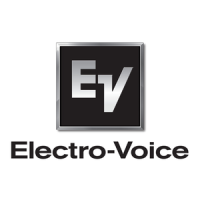
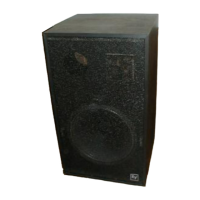

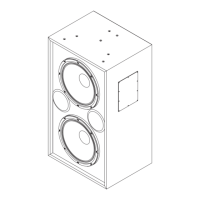


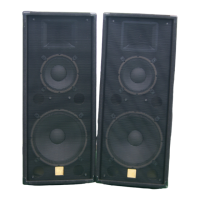
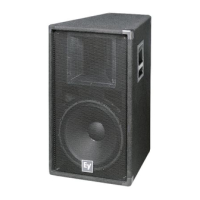
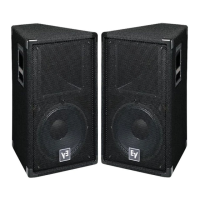
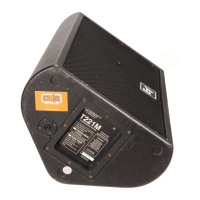
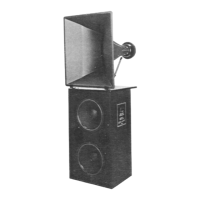

